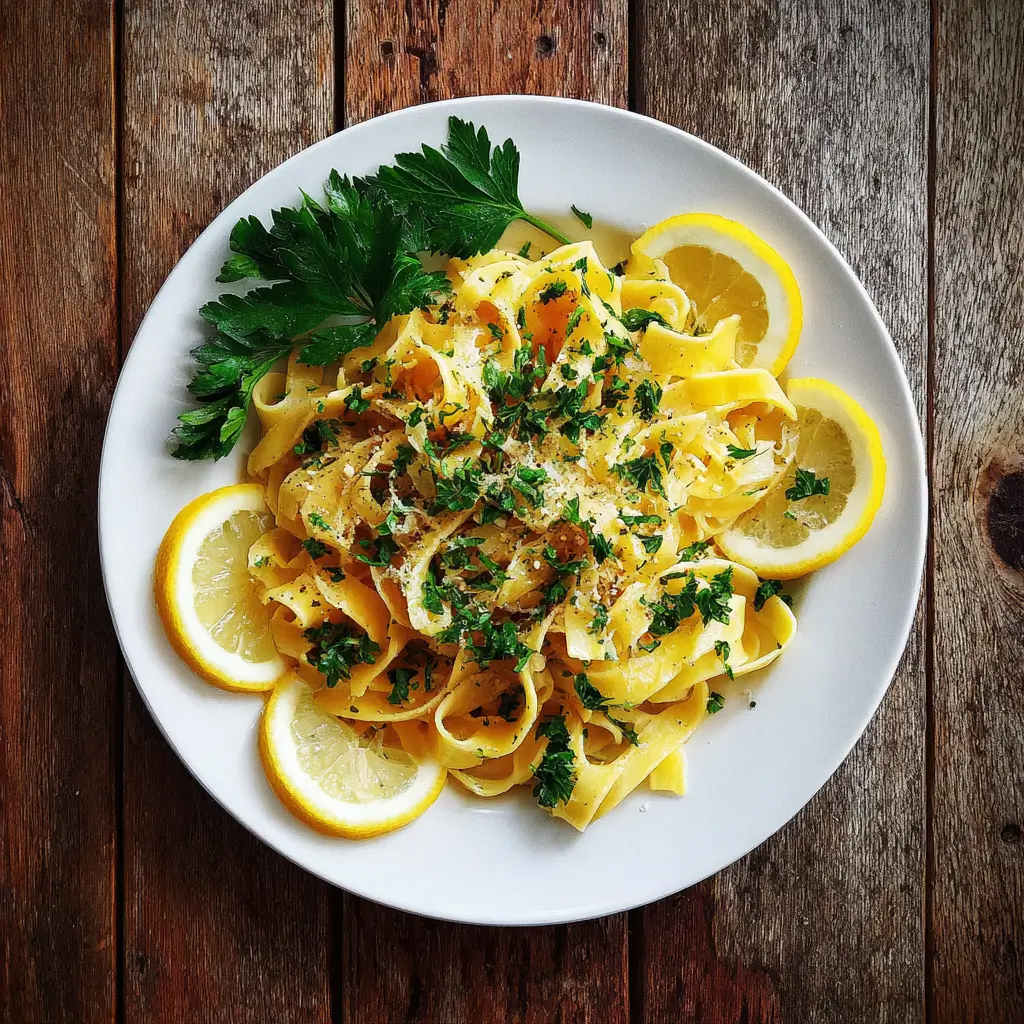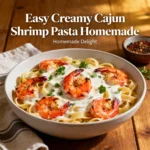Introduction
Pasta al Limone, or Lemon Pasta, is a simple yet elegant Italian dish that celebrates the bright, zesty flavor of lemons in a creamy, delicate sauce. Originating from Southern Italy, particularly regions like Sorrento and Amalfi where citrus fruits thrive, this pasta dish has become a favorite across the globe for its refreshing taste and minimal ingredients. Whether you’re looking for a quick weeknight dinner or an impressive light meal for guests, Pasta al Limone delivers both sophistication and comfort without the need for complicated techniques or rare ingredients.
The History
Pasta al Limone traces its roots to the sun-drenched coasts of Southern Italy, where lemon groves have flourished for centuries. The Sorrento Peninsula and the Amalfi Coast are renowned for their high-quality citrus fruits, especially the Sorrento lemon, known for its intense aroma and thick peel. Traditionally, locals would use these lemons to enhance seafood dishes and pastries, but over time, they found their way into pasta preparations as well. While not as ancient as other classic Italian pasta recipes, Pasta al Limone gained popularity in the 20th century and is now a staple on many Italian trattoria menus, especially during the spring and summer months when fresh lemons are abundant.
Ingredients Breakdown
The beauty of Pasta al Limone lies in its simplicity. The core ingredients include:
- Pasta: Usually spaghetti or linguine, which holds the sauce well.
- Lemons: Freshly zested and juiced for vibrant flavor.
- Butter: Adds richness and helps create a silky sauce.
- Olive Oil: For sautéing and balancing the richness.
- Garlic (optional): A mild background note for depth.
- White Wine (optional): Often used to deglaze the pan and add complexity.
- Cheese (optional): Parmigiano-Reggiano or Pecorino Romano for a salty finish.
- Herbs (optional): Fresh parsley or basil for garnish and freshness.
Step-by-Step Recipe
- Bring a large pot of salted water to a boil and cook your pasta according to package instructions until al dente.
- While the pasta cooks, zest two lemons, making sure to avoid the white pith underneath.
- Squeeze the juice from the lemons—aim for about 1/3 cup of juice.
- In a large skillet, melt 2 tablespoons of butter with 2 tablespoons of olive oil over medium heat.
- Add one minced garlic clove (optional) and sauté for 1 minute until fragrant but not browned.
- Pour in 1/4 cup of dry white wine (optional) and let it simmer for 2–3 minutes to reduce slightly.
- Add the lemon zest and juice, stirring continuously to combine with the butter mixture.
- Season with salt and freshly ground black pepper to taste.
- Once the pasta is cooked, reserve a cup of pasta water before draining.
- Add the hot pasta directly to the skillet with the lemon sauce.
- Toss everything together, adding small splashes of pasta water as needed to create a creamy emulsion.
- If using cheese, stir in grated Parmigiano-Reggiano or Pecorino Romano off the heat to prevent clumping.
- Garnish with chopped fresh herbs and additional lemon zest if desired.
Tips
- Use room-temperature lemons for easier zesting and more juice extraction.
- Always zest the lemon before cutting and juicing to avoid losing any zest.
- For a smoother sauce, strain the lemon juice to remove seeds and pulp.
- Don’t overcook the lemon sauce; too much heat can cause it to separate or curdle.
- Adding pasta water slowly while tossing helps bind the sauce to the noodles.
- Finish the dish right before serving to maintain the bright lemon flavor.
Variations and Customizations
Pasta al Limone is highly adaptable depending on your preferences or pantry items:
- Creamy Version: Add a splash of heavy cream along with the butter for an extra-rich sauce.
- Seafood Twist: Toss in grilled shrimp, scallops, or calamari for a luxurious touch.
- Vegan Option: Substitute butter with vegan margarine and omit cheese, or use nutritional yeast for a cheesy flavor.
- Spicy Kick: Add a pinch of red chili flakes to the pan with the garlic.
- Vegetable Addition: Stir in blanched asparagus, peas, or cherry tomatoes for added texture and nutrition.
- Dairy-Free Cheese: Use cashew cream or vegan Parmesan for a non-dairy alternative.
Health Considerations and Nutritional Value
Pasta al Limone is relatively healthy, especially when made with whole grain or legume-based pasta. Lemons are rich in vitamin C and antioxidants, supporting immune health and digestion. Olive oil contributes heart-healthy monounsaturated fats, while butter adds saturated fat and calories. To lighten the dish, you can reduce the amount of butter or replace it entirely with olive oil. Avoiding cheese also makes it lower in sodium and suitable for dairy-free diets. This dish is low in fiber unless paired with vegetables or whole grains, so consider adding greens or choosing fiber-rich pasta varieties for a balanced meal.
Ingredients
- 400g (about 14 oz) spaghetti or linguine
- 2 large lemons (zested and juiced)
- 2 tbsp unsalted butter
- 2 tbsp extra virgin olive oil
- 1 garlic clove, minced (optional)
- 1/4 cup dry white wine (optional)
- Salt and black pepper to taste
- 1/4 cup grated Parmigiano-Reggiano or Pecorino Romano (optional)
- Chopped fresh parsley or basil for garnish
Directions
- Boil salted water in a large pot and cook pasta until al dente.
- Zest and juice the lemons, keeping the zest and strained juice separate.
- In a large skillet, melt butter and olive oil over medium heat.
- Add minced garlic and sauté for 1 minute (optional).
- Add white wine and let it simmer for 2–3 minutes (optional).
- Stir in lemon zest and juice, cooking gently without boiling.
- Season with salt and pepper.
- Drain pasta, reserving a cup of pasta water.
- Add pasta to the skillet and toss with the lemon sauce, adding pasta water as needed to reach a creamy consistency.
- Remove from heat and stir in cheese if using.
- Garnish with herbs and serve immediately.
FAQ
Can I make Pasta al Limone ahead of time?
It’s best served fresh, as the lemon flavor diminishes over time and the pasta may dry out. If reheating, add a splash of water or olive oil and reheat gently.
Is Pasta al Limone gluten-free?
Not traditionally, but you can substitute regular pasta with gluten-free pasta to suit dietary needs.
Why did my sauce break or separate?
This usually happens if the heat is too high or the lemon juice is too acidic. Cook the sauce gently and temper it by adding pasta water gradually.
What kind of lemons should I use?
Fragrant, organic lemons like Meyer lemons or Sorrento lemons are ideal, but standard Eureka lemons work fine too.
Can I use bottled lemon juice?
Freshly squeezed lemon juice is always recommended for the best flavor and aroma. Bottled juice tends to be less vibrant and sometimes bitter.










